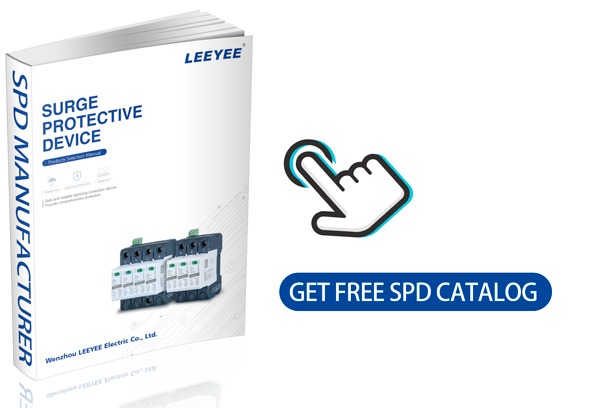Power surges can strike unexpectedly, damaging your valuable electronics and leading to costly repairs. These surges, often caused by lightning or power fluctuations, pose significant risks to your devices. Understanding surge protective modules and devices can help you safeguard your electronics effectively.
Surge protective modules and devices are essential for preventing damage from voltage spikes. They divert excess energy away from sensitive equipment, ensuring your electronics remain safe from harmful surges.
Let’s explore the types of surge protective devices, their functions, and how they can protect your home and equipment.
What Are Surge Protective Devices?
Surge protective devices (SPDs) are designed to protect electrical equipment from voltage spikes. These spikes can occur due to various factors, including lightning strikes, power outages, or the switching of large appliances. SPDs work by redirecting excess voltage away from sensitive electronics, minimizing the risk of damage.
Types of Surge Protective Devices
- Whole-House Surge Protectors: These devices are installed at the main electrical panel and protect the entire home from external surges. They act as the first line of defense against powerful surges, ensuring that all circuits are shielded.
- Point-of-Use Surge Protectors: Commonly found in the form of power strips, these devices protect individual devices or specific outlets. They are ideal for sensitive electronics like computers, televisions, and home entertainment systems.
- Type 1 and Type 2 SPDs: Type 1 devices are installed between the utility service and the building’s electrical system, while Type 2 devices are placed at the service entrance or main panel. Both types provide critical protection against surges from different sources.
How Surge Protective Devices Work
SPDs operate by sensing voltage surges and diverting excess energy to the ground. When the voltage exceeds a certain threshold, the SPD activates, allowing it to conduct the excess energy away from connected devices. This process prevents the high voltage from reaching sensitive electronics, reducing the risk of damage.
Benefits of Using Surge Protective Devices
- Protection for Electronics: SPDs safeguard your valuable electronics from damage due to voltage spikes. This protection helps extend the lifespan of devices and reduces repair or replacement costs.
- Enhanced Safety: By preventing damage from surges, SPDs also reduce the risk of electrical fires and other hazards associated with voltage spikes. This enhances overall safety in your home.
- Cost Savings: Investing in surge protective devices can save you money in the long run. By protecting against costly repairs and replacements, SPDs provide a financial benefit alongside their protective functions.
Choosing the Right Surge Protective Device
When selecting an SPD, consider the following factors:
- Joule Rating: This rating indicates how much energy the SPD can absorb before it fails. A higher joule rating provides better protection, so choose devices that match your needs.
- Clamping Voltage: The clamping voltage is the threshold at which the SPD begins to divert excess energy. Lower clamping voltages offer better protection for sensitive devices.
- Response Time: A fast response time ensures that the SPD activates quickly during a surge. Look for devices with response times of one nanosecond or less for optimal protection.
- Indicator Lights: Many SPDs come with indicator lights that show their operational status. These lights help you monitor whether the device is functioning correctly.
Installation and Maintenance
- Professional Installation: For whole-house surge protectors, consider hiring a licensed electrician for installation. Proper installation ensures that the device integrates seamlessly into your electrical system.
- Regular Checks: Periodically inspect your surge protective devices for signs of wear or damage. Some devices may need replacement after absorbing a significant amount of energy.
- Layered Protection: Combining whole-house and point-of-use surge protectors provides comprehensive protection. This layered approach ensures all devices, regardless of where they are plugged in, receive adequate protection.
Common Misconceptions
- SPDs Are Optional: Some homeowners believe that surge protective devices are unnecessary. However, without SPDs, your electronics are vulnerable to damaging surges.
- All SPDs Are the Same: Not all surge protectors offer the same level of protection. Always check specifications to ensure you choose a device that meets your requirements.
- Only Lightning Causes Surges: Many assume that lightning is the only cause of power surges. In reality, surges can also stem from internal sources, such as appliances cycling on and off.
Conclusion
Surge protective modules and devices are essential for protecting your electronics from damaging voltage spikes. By understanding the different types of SPDs and their functions, you can make informed decisions about how to safeguard your home.
Investing in surge protection not only enhances the safety of your electronic devices but also provides peace of mind. Ensure your home is equipped with the right surge protective devices to maintain a safe and reliable electrical system.
About LEEYEE:
Established in 2009, LEEYEE is a specialized manufacturer of surge protective devices (SPDs). We own the certificates of CE, CB, ISO9001, and TUV. In addition, we support customization options for color appearance, parameters, and logos. Welcome to consult for product catalogs and inquiries, you can contact us via email at devin@cnspd.com.

